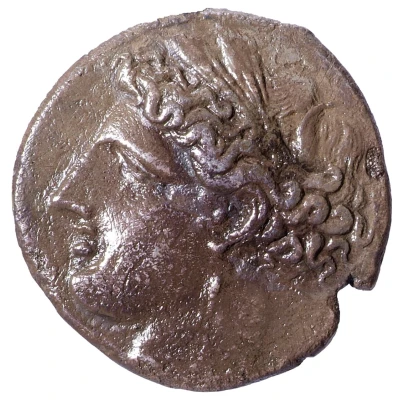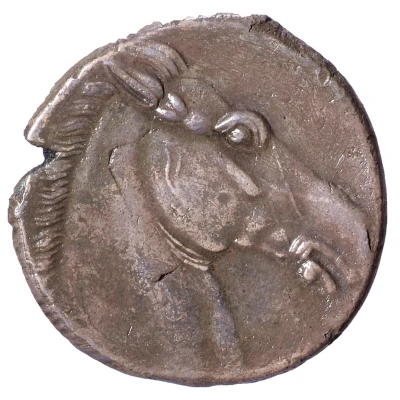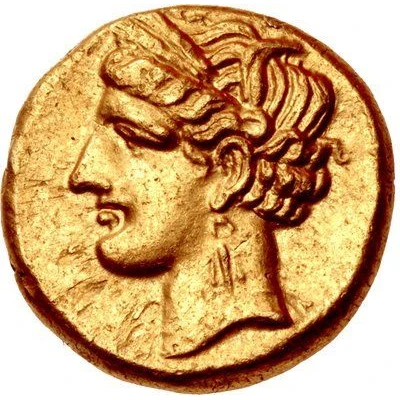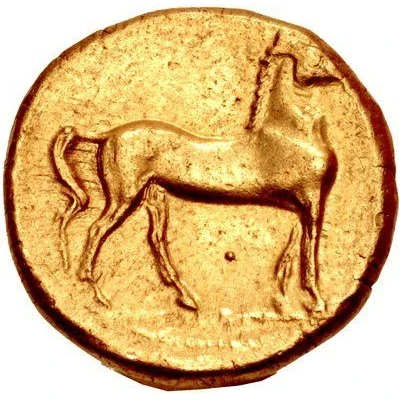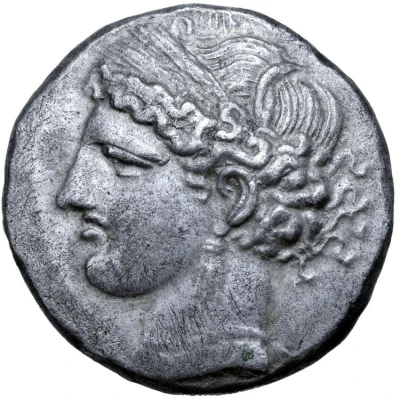
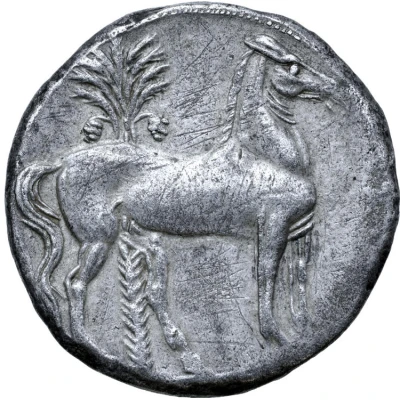

Trishekel 264 BC - 241 BC
| Silver | 18.84 g | 31 mm |
| Issuer | Carthage (Zeugitana) |
|---|---|
| Period | First Punic War (264 BC - 241 BC) |
| Type | Standard circulation coin |
| Years | 264 BC - 241 BC |
| Value | Trishekel (3) |
| Currency | Shekel |
| Composition | Silver |
| Weight | 18.84 g |
| Diameter | 31 mm |
| Shape | Round (irregular) |
| Technique | Hammered |
| Demonetized | Yes |
| Updated | 2024-10-09 |
| Numista | N#195040 |
|---|---|
| Rarity index | 97% |
Reverse
Horse standing to right; palm tree in background.
Comment
The great emergency that warranted the striking of this large-denomination issue can be found in the conflict which came to be known as the First Punic War, begun in 264 BC, that required Carthage to assemble a vast mercenary army to meet the Roman threat in Sicily. According to Philinos of Agrigentum this army comprised 50,000 infantry, 6,000 cavalry, and 60 elephants including Ligurians, Celts and Iberians (see Polybius, The Histories, 1:17.4). Such a large mercenary army entailed a considerable outlay of money, and as the struggle dragged on over a period of more than twenty years the Carthaginian state steadily edged ever closer to bankruptcy under the strain the war effort placed on its coffers.
Trishekels were struck in three issues during the First Punic War: the present issue with horse and palm, the other two with horse and uraeus on the reverse. The abrupt (and what must have been alarming) decline of the metal quality between this early issue and the later ones is indicative of the dire straits which the Carthaginian state was reduced to, and its rapidly dwindling precious metal supply.
Interesting fact
The Trishekel coin was used as a form of currency in the ancient city of Carthage, which was located in present-day Tunisia. The coin's design features a three-legged symbol, known as the "Trishekel," which is believed to represent the three continents that the Carthaginians traded with: Africa, Europe, and Asia. This symbol was used on many Carthaginian coins and has become a recognizable symbol of the ancient civilization.
